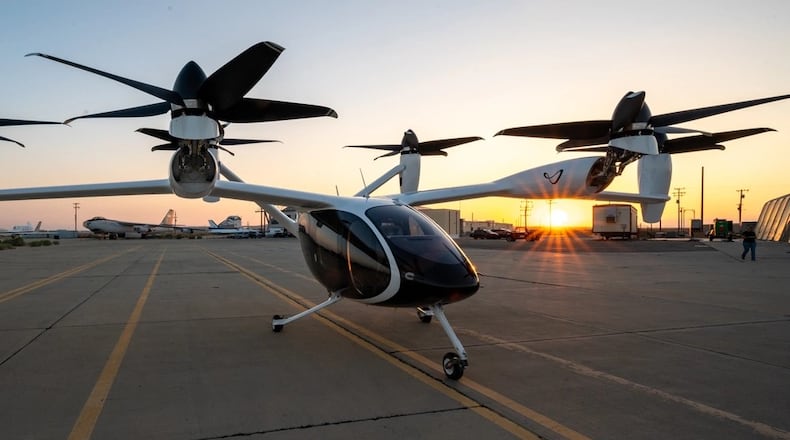Advanced air mobility provides new ways to move people and cargo between places more quickly than automobiles and more quietly than helicopters or planes.
Darryl Ahner, dean of WSU’s College of Engineering and Computer Science, said in an interview that the university’s work in the area began in January.
He calls the research two-pronged, an examination of potential improvements into the batteries that power air taxis and ways to make the vehicles overall more efficient and their sensors more powerful.
“I would call it two different focus areas,” Ahner said.
Credit: Erin Pence
Credit: Erin Pence
Advancing these vehicles’ performance means looking at everything from airworthiness to sensors to controls to materials to autonomy and noise.
Joby, in particular, has talked of its own aircraft’s relative silence as one strength of this form of transportation.
“We’ll be sharing the technical advancements that come out of the research” with companies like Joby and Beta Technologies, two air mobility pioneers, the dean said.
Wright State offers mechanical engineering bachelor’s degrees with a minor in aerospace. It also offers an electrical engineering major with an emphasis on batteries.
Wright State is describing the work ahead as “faculty-led, student-driven,” involving 13 faculty members and many graduate research assistants, as well as Sinclair Community College’s unmanned aerial systems and digital engineering programs.
The work on batteries will include designing a “smart wireless power-transferring network” that can charge multiple mobile devices. WSU says its researchers will use digital engineering to design, build and test the batteries.
The other phase of the project seeks to strengthen the performance capabilities of these vehicles. Wright State said its researchers will use artificial intelligence and algorithms to improve route planning and sensors.
“Everything from using sensors to identify and detect other aircraft, other possible things in the airspace as you’re flying, to making location and capacity decisions,” Ahner said. “Another area is ensuring safety, the situational awareness, again, using sensors for that.”
The Dayton area is no stranger to these vehicles.
The Air Force Research Laboratory (AFRL) at Wright-Patterson Air Force Base has explored the vehicles’ utility through the Air Force “Agility Prime” initiative.
At the Springfield-Beckley Municipal Airport, the National Advanced Air Mobility Center of Excellence has become a magnet for companies, AFRL, NASA and others in the industry.
“We’re part of a pretty vibrant community in advanced air mobility,” Ahner said.
About the Author



